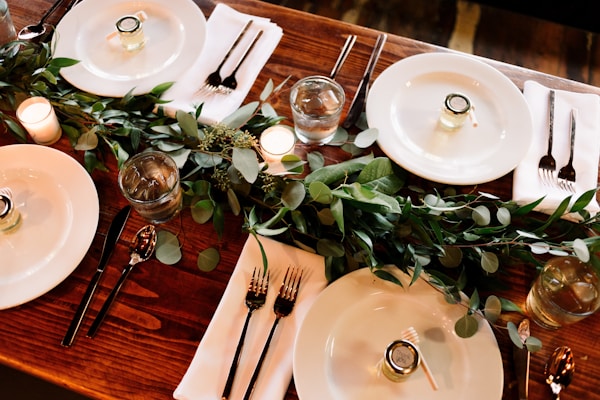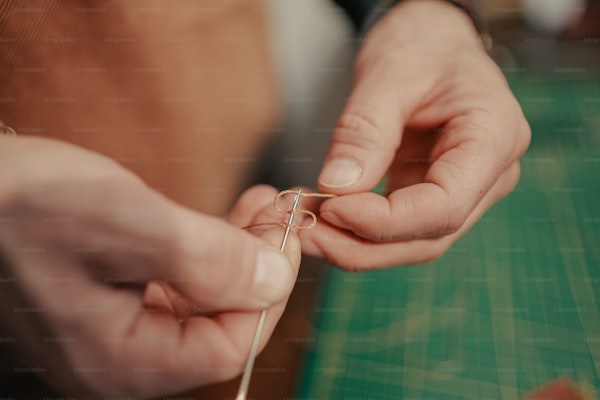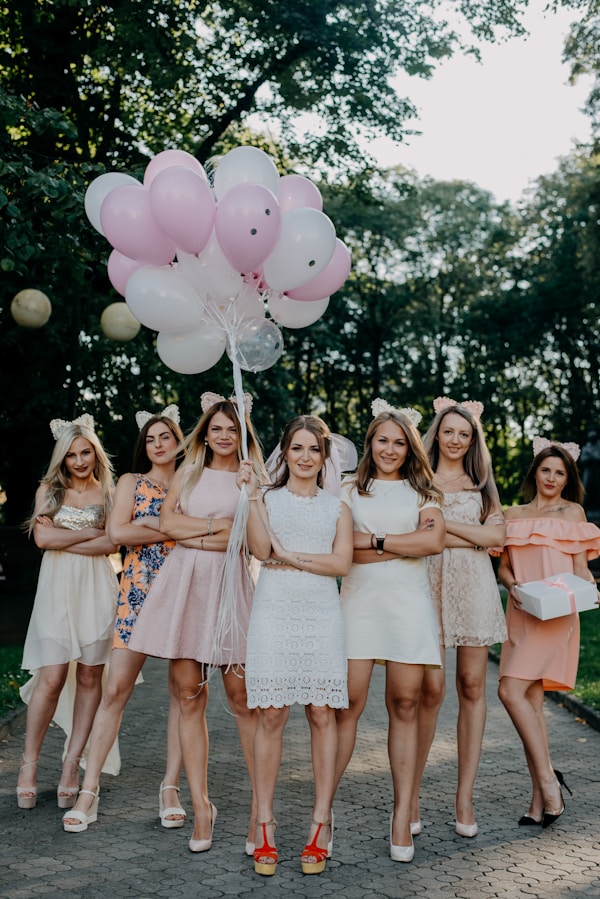How Do You Test the Durability of Embellishments Like Sequins and Beads on a Wedding Dress?
When it comes to selecting a wedding dress, the focus often lies on the overall design, fabric choice, and, importantly, the embellishments. Sequins and beads can transform a simple gown into a dazzling masterpiece, but how do you ensure these sparkling accents hold up on your special day? Testing the durability of embellishments on a wedding dress is crucial for brides-to-be who want to look their best without the worry of losing any decorative elements. In this article, we’ll explore effective methods to assess the durability of these embellishments, and what factors can influence their longevity.The Importance of Durability in Wedding Dress EmbellishmentsWedding dresses are not just clothing; they are symbols of love and commitment. Therefore, ensuring that every detail shines brightly throughout the ceremony and reception is paramount. Understanding how to test the durability of sequins and beads can save you from unexpected mishaps, such as having to replace lost decorations or dealing with damage during the day’s activities.Methods to Test the Durability of Embellishments1. Visual InspectionStart with a thorough visual inspection. Look for any signs of wear on the sequins and beads. Check for loose threads, uneven finishes, or tarnished sections. These indicators can suggest potential weaknesses in the embellishments that might not hold up over time.2. Tug TestGently tug on the sequins and beads to see how securely they are attached. A well-embroidered embellishment sh...
How Weight Distribution in Heavy Fabrics Affects Comfort in Wedding Dresses
The Importance of Weight Distribution in Wedding DressesEvery bride dreams of looking her absolute best on her wedding day, but comfort is equally important. Among the numerous factors that contribute to a wedding dress's overall comfort, the weight distribution of heavy fabrics plays a vital role. In this article, we will explore how designers manage this distribution to ensure that brides can move gracefully, enjoy their celebrations, and feel confident throughout the day.Understanding Wedding Dress FabricsBefore delving into weight distribution, it's essential to understand the various heavy fabrics commonly used in wedding dresses. Styles often feature intricate layers of tulle, satin, lace, and organza, which can significantly add to the dress's weight. Each fabric has its unique properties:Satin: Known for its luxurious look and feel, satin can be quite heavy but drapes beautifully.Organza: A thin, crisp fabric that adds volume without excessive weight, making it ideal for layering.Lace: While delicate, lace can also add considerable weight when used in thicker appliqués.Tulle: Lightweight and airy, tulle is often used for skirts and veils, helping balance heavier fabric.Techniques for Managing Weight DistributionDesigners employ various techniques to ensure that the weight of heavy fabrics is distributed correctly. This approach helps enhance comfort while preserving the dress's romantic and ethereal appearance. Below are some key strategies:1. Structured CorsetryIn ma...
Understanding Seam Reinforcement Techniques on Wedding Dresses: Preventing Tearing
Wedding dresses are often considered the centerpiece of any wedding, symbolizing love, beauty, and charm. However, one of the most critical aspects that go unnoticed by many brides is the seams of the dress. These seams are essential for the overall structure and durability of the gown. Therefore, understanding what techniques are used to reinforce seams on a wedding dress to prevent tearing is crucial for both designers and brides alike.Importance of Seam Reinforcement in Wedding DressesThe seams in a wedding dress play a pivotal role in both the aesthetic and functional aspects of the garment. A wedding dress made from heavy fabric may experience significant stress during movement, posing the risk of tearing at the seams. Consequently, the implementation of effective techniques for seam reinforcement is vital. Here are some common methods:Common Techniques for Seam ReinforcementTechniqueDescription1. Double StitchingUsing two parallel lines of stitching to secure the seam, offering extra strength.2. Bar Tack StitchingA series of stitches that lock the seam ends, preventing them from unraveling.3. French SeamsA technique that encloses the raw edges, reducing fraying and providing strength.4. Reinforced StitchingAdding extra stitches or using stronger thread at high-stress points, like armholes or waistlines.5. Use of InterfacingApplying interfacing to certain areas gives additional stability and structure to the seams.6. Bias TapeUsing bias tape along the seam allowances to ...
How Are Intricate Details Like Lace Appliqués Securely Attached to a Wedding Dress?
The wedding dress is often considered the centerpiece of a bride's look on her special day. Among various elements that make up a stunning gown, intricate details like lace appliqués stand out for their beauty and intricacy. However, have you ever wondered how these delicate features are securely attached to the fabric? In this article, we will delve into the methods used for attaching lace appliqués to wedding dresses, the considerations involved, and tips for preserving these beautiful details throughout your wedding day. The Importance of Lace Appliqués in Wedding DressesLace appliqués add a layer of sophistication and elegance to wedding dresses. They can vary in style—from floral designs to abstract patterns—allowing brides to customize their gowns uniquely. But how are these intricate details securely attached? The answer lies in various methods tailored to different types of fabrics and designs.Common Methods for Attaching Lace AppliquésThere are several methods that designers and dressmakers utilize to attach lace appliqués, each with its distinct benefits:MethodDescription1. Sewing by HandThis traditional method offers precision and allows for intricate designs to be perfectly placed on the gown. Hand-sewing is ideal for delicate fabrics.2. Sewing by MachineFor quicker application, machine sewing can be employed. This is often used for larger appliqués or when a stronger hold is needed.3. Use of Fusible WebbingThis modern technique involves adhering the appliqué to t...
Essential Quality Control Measures in High-End Wedding Dress Production
Understanding Quality Control in Luxury Wedding Dress ManufacturingWhen it comes to creating exquisite high-end wedding dresses, quality control is paramount. A wedding dress is not just a garment; it's a symbol of love, commitment, and personal style. As such, it is vital that the production process adheres to stringent quality standards to ensure that every bride feels perfect on her special day. In this article, we will explore the key quality control measures taken during the production of high-end wedding dresses, why they are important, and what other related aspects brides-to-be might want to consider when choosing their dream dress.The Importance of Quality Control in Wedding Dress ProductionHigh-end wedding dresses are intricate pieces often made from luxurious fabrics and detailed embellishments. The craftsmanship involved requires meticulous attention to detail. Quality control measures ensure that each dress not only meets aesthetic standards but also guarantees durability and comfort for the wearer. Brides invest a significant amount of money into their wedding dresses, and thus they deserve a flawless product—one that celebrates the occasion in style.Key Quality Control MeasuresThere are several key areas where quality control is implemented throughout the production of high-end wedding dresses:1. Fabric InspectionThe fabric is the foundation of any wedding dress. High-end designers often source exclusive materials like silk, satin, and lace from quality manufac...
Mastering the Art of Sewing Slippery Fabrics: A Comprehensive Guide for Wedding Dress Production
IntroductionWhen it comes to crafting the perfect wedding dress, one of the challenges that designers and seamstresses face is working with slippery fabrics like satin. Satin exudes elegance and sophistication, but its sleek texture can make it difficult to handle. In this guide, we will explore effective strategies for sewing satin in wedding dress production, ensuring that your design remains flawless and stunning.Understanding Satin: The Fabric of ChoiceSatin is a weave that features a glossy surface and a dull back, giving it a luxurious appearance that is perfect for formal wear, especially bridal gowns. However, its slippery nature can cause it to shift easily, leading to misaligned seams and uneven hems. Thus, having a deep understanding of satin's properties is crucial for any wedding dress production.Why Choose Satin for Wedding Dresses?Satin offers several advantages that make it a popular choice for wedding dresses: Aesthetic Appeal: Its lustrous finish enhances the beauty of a gown. Versatility: Satin can be used for various styles, from A-line dresses to ball gowns. Comfort: With proper lining, satin dresses can be both comfortable and breathable.Tips and Techniques for Handling Slippery FabricsNow that we have a basic understanding of satin, let’s take a closer look at effective techniques for sewing with this fabric.1. Prepare Your Fabric ProperlyBefore you begin stitching, it’s important to prepare your satin fabric. Here are step-by-step instructions...
Managing Specialty Fabrics Like Organza and Tulle in Wedding Dress Construction
Understanding Specialty Fabrics in Wedding Dress ConstructionThe intricate world of wedding dress construction often involves the use of specialty fabrics such as organza and tulle. These materials bring beauty and elegance to wedding gowns, but managing them can be a delicate process. In this article, we will explore how designers manage these fabrics during the construction of wedding dresses, ensuring the final result is nothing short of stunning.What Are Specialty Fabrics?Specialty fabrics are unique materials used in fashion design that require specific techniques to handle. Organza and tulle are two of the most popular fabrics used in wedding dresses. They lend a romantic, airy quality to the gown and can be used for a variety of design elements like overlays, veils, and embellishments.Organza: Characteristics and UsageOrganza is a thin, plain weave, sheer fabric made from silk or nylon. It is well-known for its crispness and ability to hold shapes well. Designers often use organza to create voluminous skirts and layers, as its stiffer structure allows for dramatic effects.Tulle: Characteristics and UsageTulle is a lightweight, netting-like fabric often made from nylon, silk, or rayon. Its soft, flowing nature makes it ideal for incredibly romantic and whimsical designs. Tulle is frequently used in skirts, veils, and sleeves due to its ability to create a soft, ethereal look.Managing Organza and Tulle During ConstructionWorking with specialty fabrics requires unique con...
Mastering the Art of Cutting Fabric on the Bias for Your Dream Wedding Dress
What Are the Best Practices for Cutting Fabric on the Bias for a Wedding Dress?When it comes to making a wedding dress, the fabric choice, along with how it’s cut, plays a pivotal role in the final outcome. One of the techniques that can significantly enhance the drape and fit of a wedding dress is cutting the fabric on the bias. This article delves into the best practices for cutting fabric on the bias, ensuring that your wedding dress not only looks stunning but also fits flawlessly.Understanding Bias CuttingCutting fabric on the bias means cutting it diagonally across the grain. When done correctly, this technique allows the fabric to stretch and drape beautifully, resulting in a flattering fit. Here’s why bias cutting is particularly effective for wedding dresses: Enhanced Drape: Bias-cut fabrics tend to cling and flow with the body's natural curves, creating a romantic silhouette. Comfort: The stretch from bias cutting offers more comfort, which is essential for a long day of celebration. Creative Design Opportunities: This technique can be used for various styles, from fitted gowns to flowing A-lines.The Basics of Bias CuttingBefore diving into the actual cutting, it’s crucial to gather the right materials. Here’s a simple checklist: Fabric (choose a soft and flowing type, such as silk or chiffon) Tailor's chalk or fabric marker Ruler or measuring tape Sharp scissors or rotary cutter Cutting mat (if using a rotary cutter) Pattern weights (to h...
Essential Methods to Reinforce Delicate Wedding Dress Fabrics like Chiffon
The Art of Protecting Your Wedding Dress: Reinforcement Techniques for ChiffonWhen planning a wedding, every detail matters, especially the wedding dress. Among the fabrics, chiffon stands out for its ethereal beauty and flowing elegance. However, its delicacy raises concerns regarding durability and longevity. This article will explore effective methods to reinforce delicate wedding dress fabrics like chiffon, ensuring your dream dress remains exquisite on your special day and beyond.Why Reinforce Chiffon Wedding Dresses?Chiffon is a lightweight, sheer fabric known for its graceful drape and soft texture. While these qualities make it a popular choice for wedding dresses, they also make it susceptible to tears, fraying, and other types of damage. Reinforcement helps maintain the integrity of the fabric, ensuring your dress can withstand the wear and tear of the day. Here are some key reasons to consider reinforcement: Longevity: Reinforcing chiffon can help ensure that your dress can be preserved and passed down through generations. Ease of Movement: A well-reinforced dress allows for easier movement without the fear of damaging the fabric. Aesthetic Appeal: Proper reinforcement can enhance the overall look of the dress, keeping it flouncy and beautiful.Effective Methods for Reinforcing ChiffonNow that we understand the importance of reinforcing chiffon, let’s delve into some practical methods. Method Description Interfacing Applying interfacing can provide structure ...
Discover the Art of Bias-Cut Wedding Dresses: Techniques and Trends
Understanding Bias-Cut Wedding DressesWhen it comes to wedding attire, the choice of dress can transform the experience of your special day. One exquisite style gaining attention is the bias-cut wedding dress. But what techniques are used to create a bias-cut wedding dress? In this article, we will delve deep into the craftsmanship behind this stunning silhouette, exploring its unique characteristics, the techniques involved in its creation, and tips for brides looking to select the perfect gown.What is a Bias-Cut Wedding Dress?A bias-cut wedding dress is designed using a technique that involves cutting the fabric at a 45-degree angle to the weave. This method allows the fabric to drape beautifully and create a figure-flattering silhouette that showcases the natural curves of the body. The bias cut is particularly favored for its soft, flowing lines, often resulting in a romantic and ethereal look.The History of Bias-Cut FashionThe bias-cut technique rose to prominence in the early 20th century, largely attributed to the iconic designer Madeleine Vionnet. Vionnet's innovations in cutting fabric on the bias paved the way for a new understanding of how garments can fit and flow. This technique quickly gained popularity in bridal wear due to its ability to create movement and grace. The allure of a bias-cut wedding dress continues today, as more brides look for a combination of elegance and comfort.Techniques Used to Create a Bias-Cut Wedding DressThe artistry involved in crafti...
Overcoming the Challenges of Working with Metallic Fabrics in Wedding Dress Production
The Allure of Metallic Fabrics in Wedding DressesMetallic fabrics are a popular choice in the world of bridal fashion, known for their unique shine and glamorous appeal. However, integrating these materials into wedding dress production comes with its own set of challenges. In this article, we will explore the various difficulties designers face when working with metallic fabrics, along with tips on how to triumph over these hurdles.The Beauty and Appeal of Metallic FabricsMetallic fabrics can bring a stunning visual impact to wedding gowns. Their ability to catch light and shimmer can create a captivating look for brides. Wedding dresses made from these materials often symbolize luxury and elegance. However, their beauty comes at a price, as the manufacturing process can be complicated.Common Challenges of Working with Metallic FabricsThere are several challenges designers encounter when working with metallic fabrics in wedding dresses, including:1. Fabric Weight and DrapeMetallic fabrics often have a heavier weight compared to traditional bridal materials. This can affect the drape of the gown and lead to discomfort for the bride. It's essential for designers to consider how the fabric will move and flow during the design process. Proper layering techniques and pattern designs can help mitigate these issues.2. Sewing DifficultiesOne of the most significant challenges with metallic fabrics is sewing. The fabric can be slippery, making it hard to handle and cut accurately. Ad...










